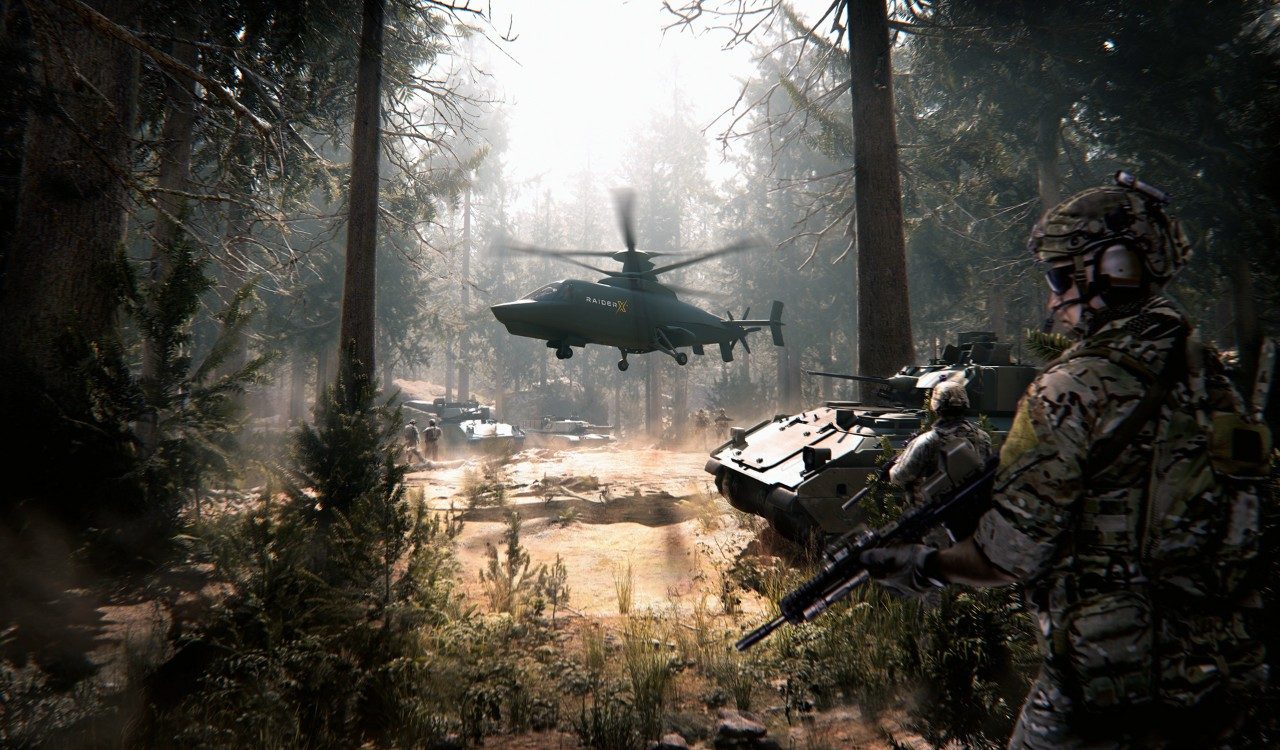U.S. Army’s future helicopter will fly like a tactical jet aircraft
Posted on
The U.S. Army is working to receive modern and high-speed helicopter s in the near future to replace a fleet of attack reconnaissance aircraft in service.
As part of the Army’s Future Vertical Lift modernization priority, the competition to design, build, and test the Future Attack Reconnaissance Aircraft (FARA) Competitive Prototype is progressing ahead of schedule and exceeding expectations along the way.
This out-front platform will fly into the most demanding and contested environments and requires maximum performance in a small package. The Army already calls the FARA a “knife fighter” for the future battlefield.
As to date, the Army has narrowed the field of candidates for its Future Attack Reconnaissance Aircraft, which aims to replace the OH-58D Kiowa Warrior and some of the Apache helicopter fleet.
The RAIDER X built by Lockheed Martin’s Sikorsky, based on Sikorsky X2 Technology, has been selected for the second phase of the program.
The first time battle-proven pilot Bill Fell flew in a Sikorsky X2 Technology  helicopter, he knew the rotary wing game had changed. Significantly. And forever.
helicopter, he knew the rotary wing game had changed. Significantly. And forever.
X2 aircraft have achieved speeds greater than 250 knots, low-speed and high-speed maneuverability at 60-plus degrees of bank, and the ability to hover in high altitudes and hot conditions, among other advanced capabilities.
“These fundamentals make a helicopter fly more like a tactical jet aircraft than a classic rotorcraft,” says Fell, an X2 experimental test pilot with Sikorsky, a Lockheed Martin company, which developed X2 Technology .
.
Combine X2 with the Sikorsky’s co-axial design, and military aviation has met the future of vertical lift, Fell says. At AUSA in October 2019, Sikorsky unveiled RAIDER X – its answer to the U.S. Army’s call for a Future Attack and Reconnaissance Aircraft (FARA).
– its answer to the U.S. Army’s call for a Future Attack and Reconnaissance Aircraft (FARA).
Conventional helicopter design and technology have relied on hover and low-speed maneuverability for several decades. These capabilities have been essential, but helicopter technology has not kept pace with the evolving demands.
X2 is proven technology that accomplishes exactly what the name implies: two times the speed, two times the maneuverability of conventional rotorcraft along with a host of other advantages, including significant improvements in noise signature and overall survivability. X2 is leading the way for the future of vertical lift – at high-speed.
As emerging technologies such as artificial intelligence, hypersonics, machine learning, nanotechnology, and robotics are revolutionizing the battlefields of the future, the complexity of modern warfare and evolving threats are pushing the U.S. military to develop and field advanced capabilities to do things previously unimaginable.
Commanders say the next generation of rotorcraft will need to be faster, more maneuverable, more lethal, and technologically advanced, including the ability to team with autonomous aircraft.
The Army wants game-changing technologies that “can operate in a highly contested operational environment, cannot be easily isolated from the rest of the Joint Force or from partners, and are able to conduct independent maneuver,” according to The U.S. Army in Multi-Domain Operations, 2028.

Subscribe to our newsletter
Promotions, new products and sales. Directly to your inbox.
